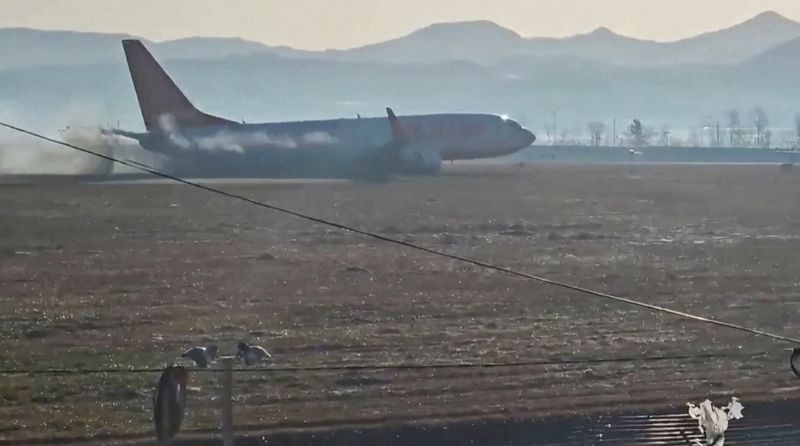By Bart Meijer
(Reuters) – Uncertainties encompass the deadliest crash on South Korean soil, consultants stated on Sunday, questioning preliminary options {that a} chicken strike might need introduced down Jeju Air flight 7C2216.
The obvious absence of touchdown gear, the timing of the twin-engine Boeing (NYSE:) 737-800’s belly-landing at Muan Worldwide Airport and the stories of a attainable chicken strike all raised questions that might not but be answered.
The only-aisle plane was seen in video broadcast on native media skidding down the runway with no seen touchdown gear earlier than slamming right into a wall in an explosion of flame and particles.
“Why didn’t fire tenders lay foam on the runway? Why weren’t they in attendance when the plane touched down? And why did the aircraft touch down so far down the runway? And why was there a brick wall at the end of the runway?” stated Airline Information editor Geoffrey Thomas.
South Korean officers stated they had been investigating the reason for the crash, together with a attainable chicken strike, which killed virtually all of the 181 folks on the plane.
The flight knowledge recorder was discovered at 11:30 a.m. (0230 GMT), about two and a half hours after the crash, and the cockpit voice recorder was discovered at 2:24 p.m., in accordance with South Korea’s transport ministry.
“That gives you all the parameters of all the systems of the plane. The heartbeat of the airplane is on the flight data recorder,” Thomas stated. “The voice recorder will probably provide the most interesting analysis of what went on on this tragic crash.”
Inside a couple of minutes, the management tower issued a chicken strike warning, pilots declared mayday after which tried to land, officers stated, though it was not clear whether or not the plane had hit any birds.
Specialists stated it appeared unlikely a chicken strike would have brought about the touchdown gear to malfunction.
“A bird strike is not unusual, problems with an undercarriage are not unusual. Bird strikes happen far more often, but typically they don’t cause the loss of an airplane by themselves,” Thomas stated.
Australian airline security skilled Geoffrey Dell (NYSE:) stated, “I’ve never seen a bird strike prevent the landing gear from being extended.”
Australian aviation guide Trevor Jensen stated hearth and emergency providers would usually be prepared for a belly-landing, “so this appears to be unplanned”.
A chicken strike might have impacted the CFM Worldwide engines if a flock had been sucked into them however that may not have shut them down straightaway, giving the pilots a while to cope with the state of affairs, Dell stated.
It was unclear why the aircraft didn’t decelerate after it hit the runway, Dell and Jensen stated.

Usually in a stomach touchdown, “You are going to land on your engines and you’re going to have a bumpy ride,” Thomas stated.
“You come in with minimum fuel, you have fire tenders in attendance, covering the runway with foam and you land at the furthest end of the runway and usually it ends up being an OK situation.”




